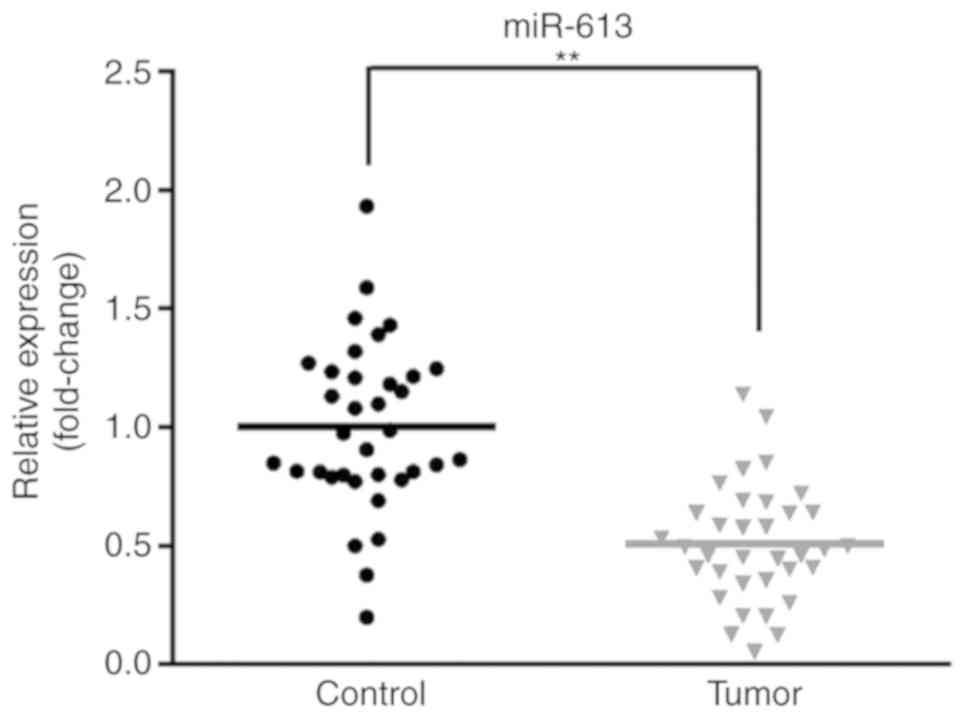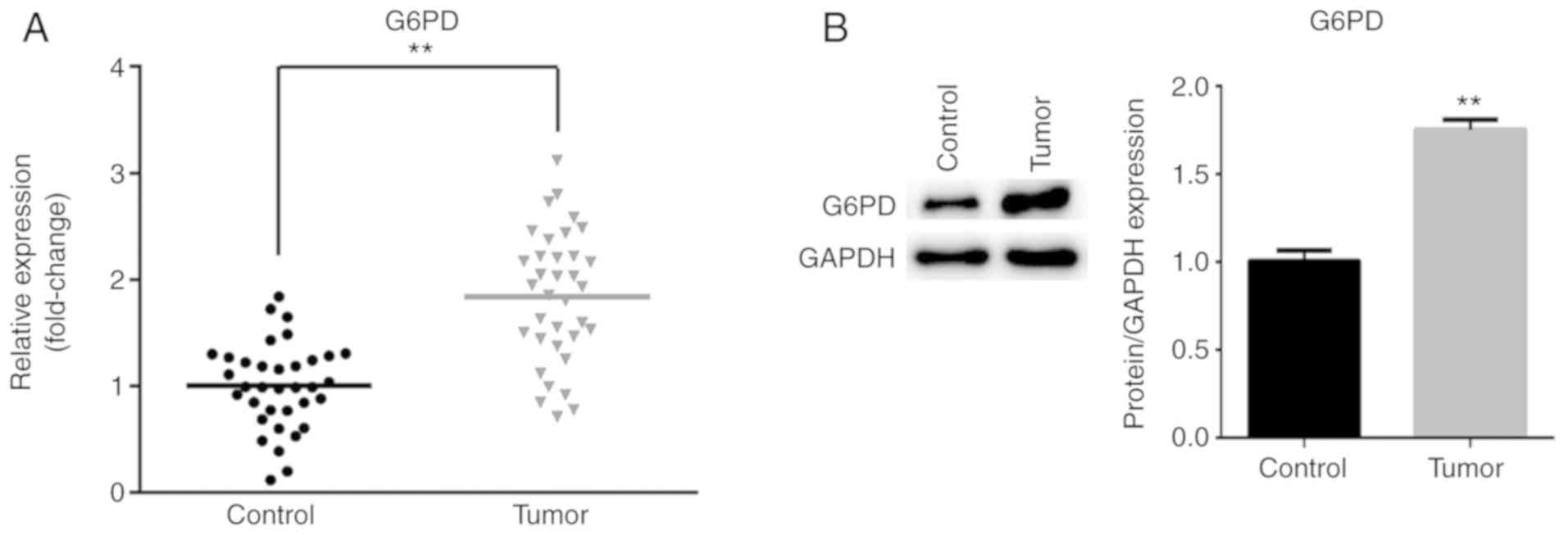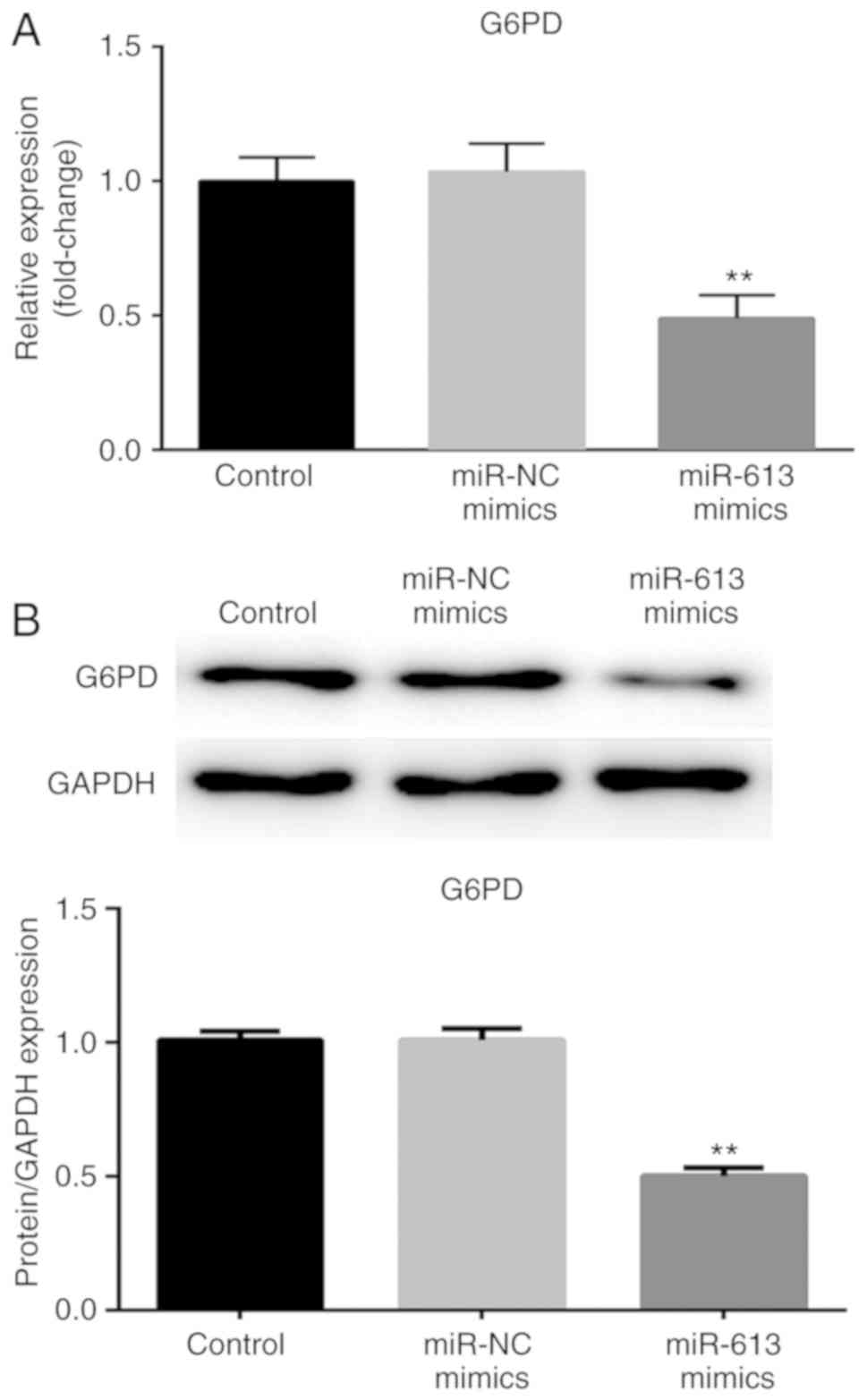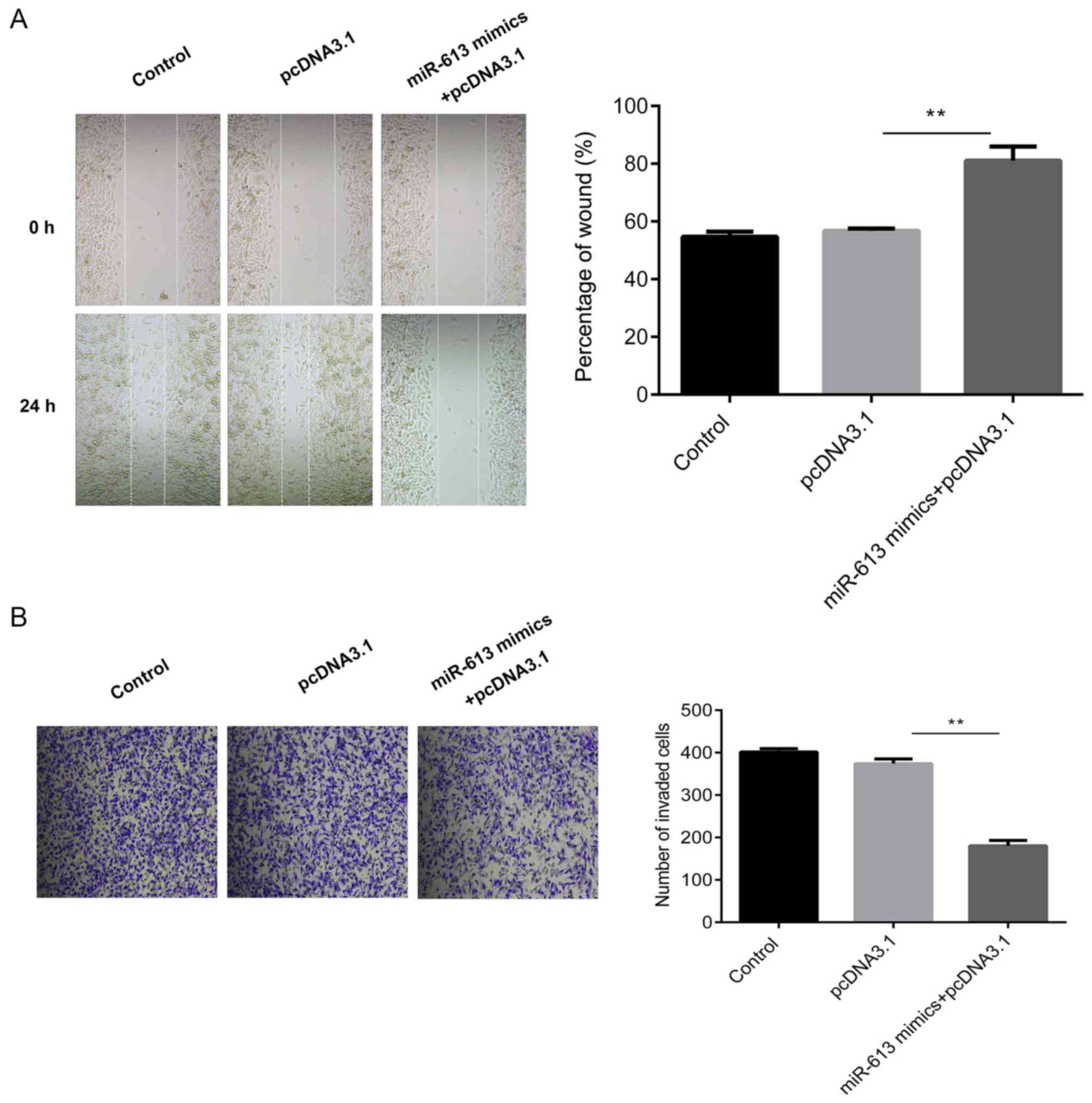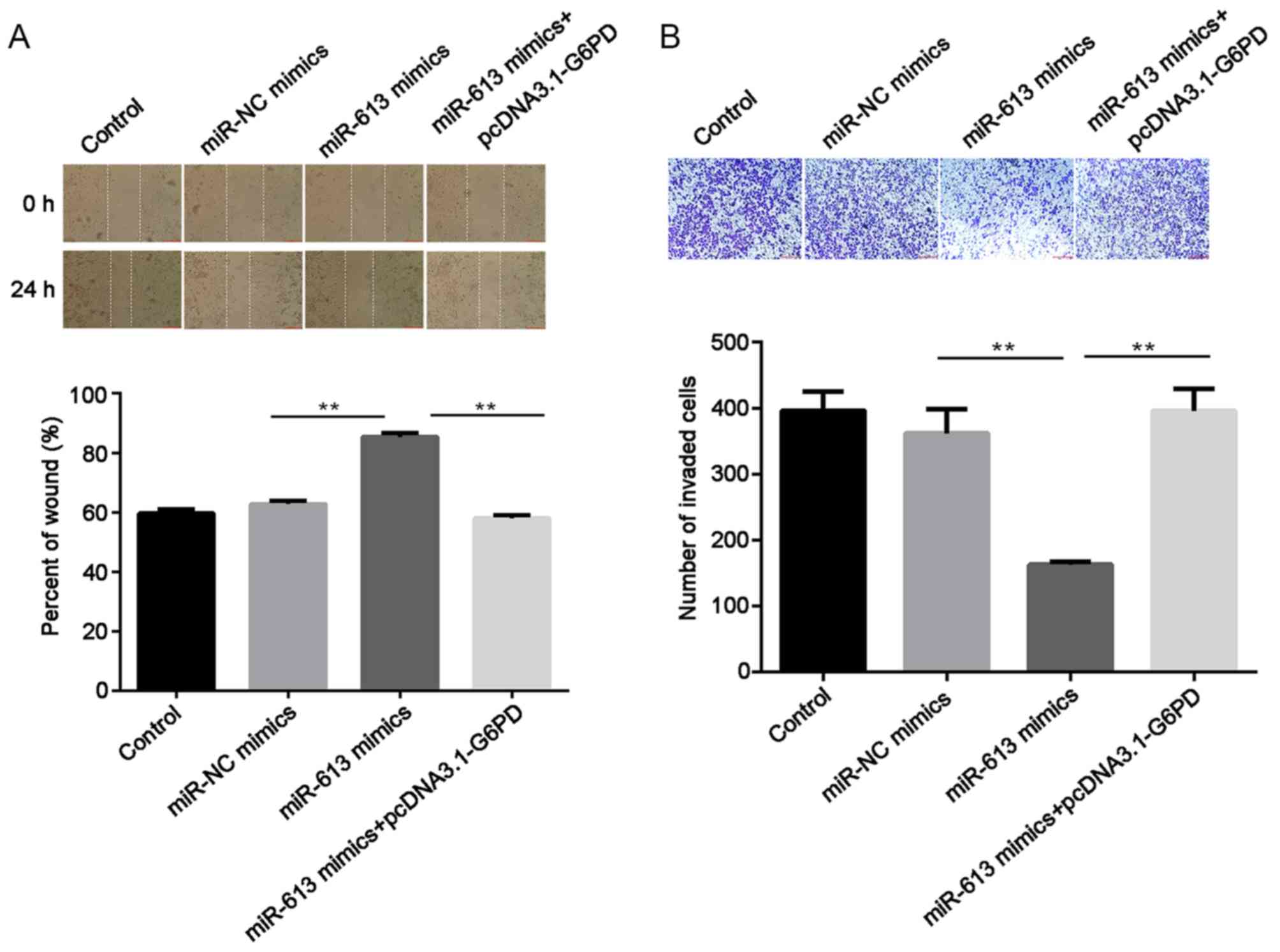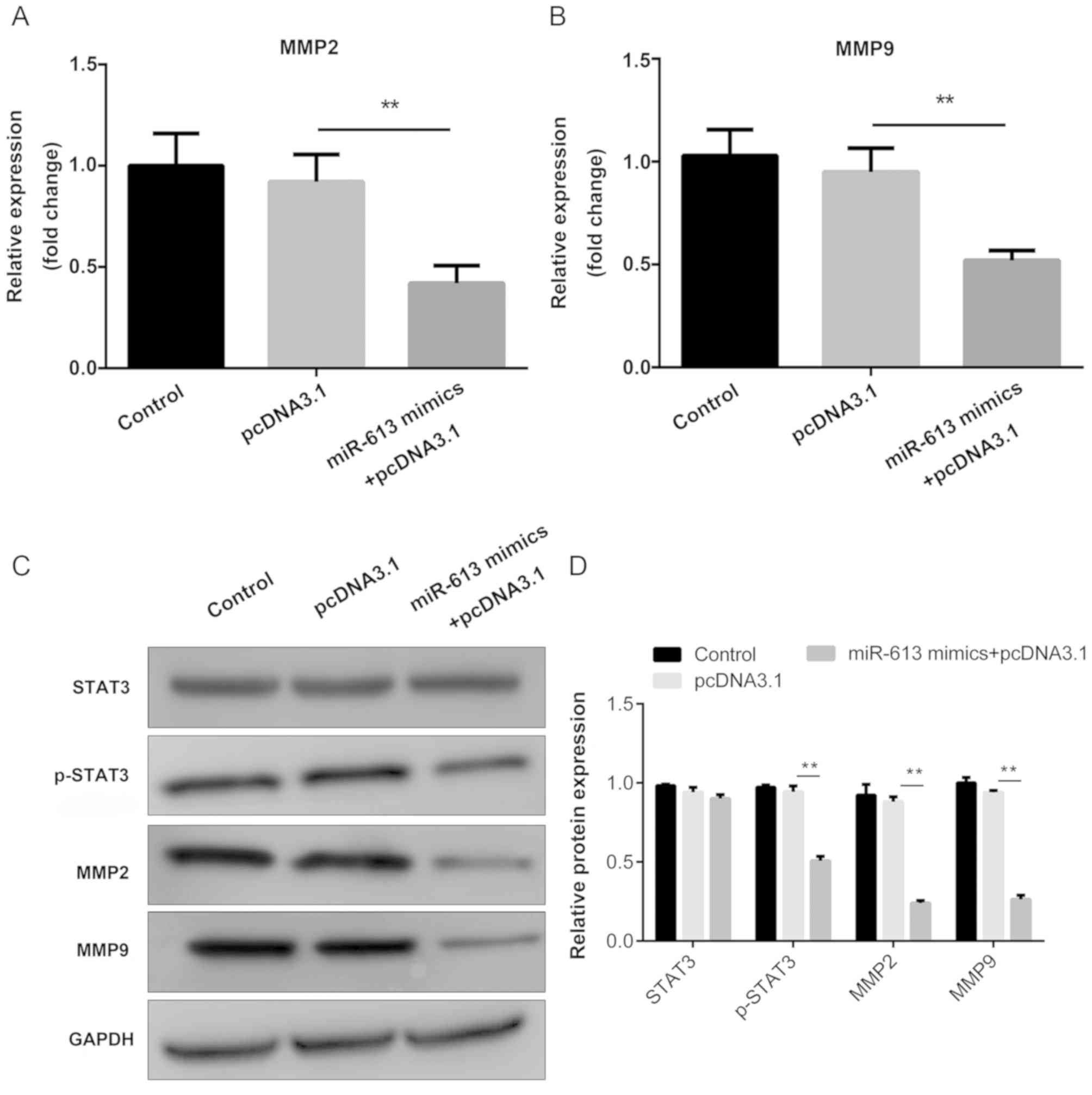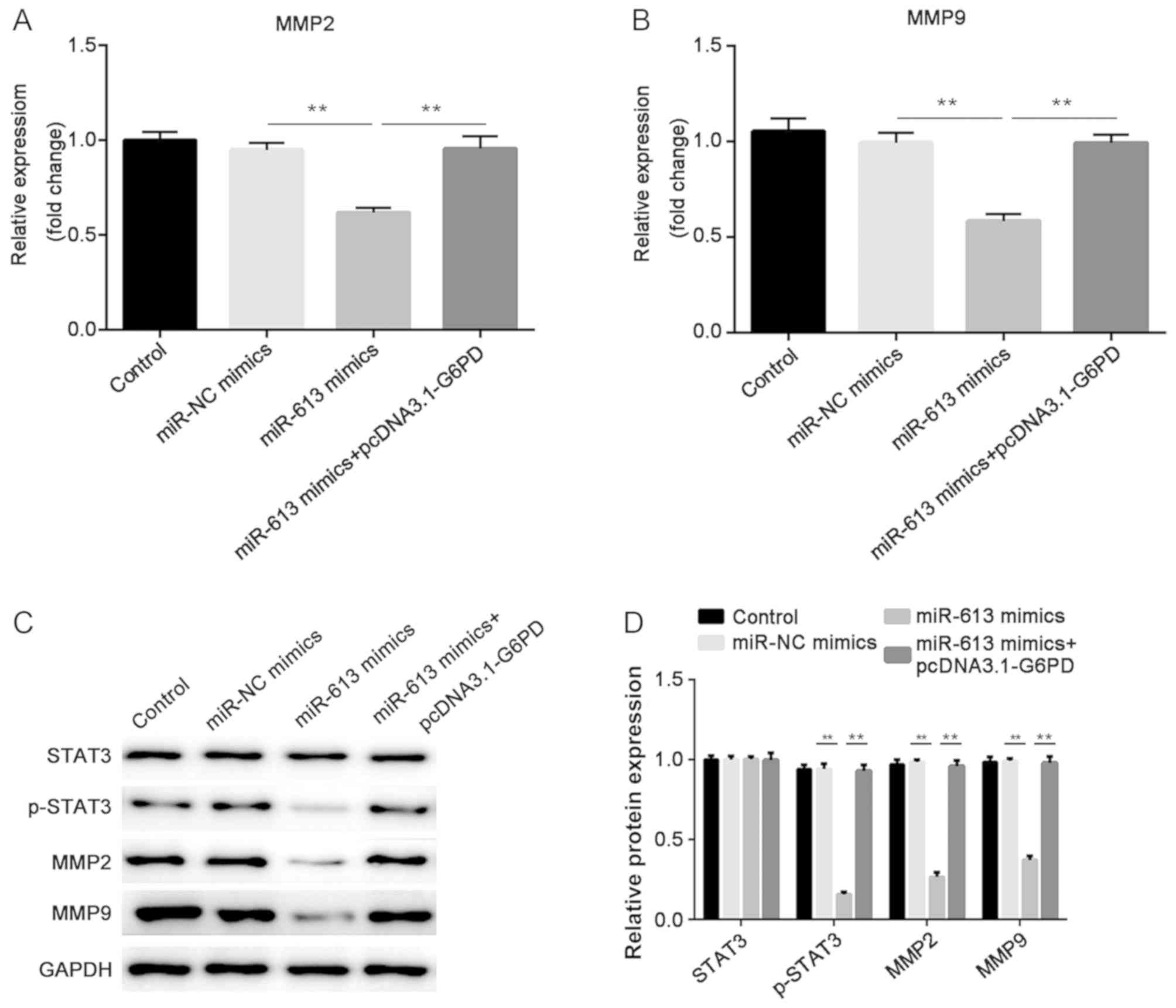|
1
|
Ferlay J, Soerjomataram I, Dikshit R, Eser
S, Mathers C, Rebelo M, Parkin DM, Forman D and Bray F: Cancer
incidence and mortality worldwide: Sources, methods and major
patterns in GLOBOCAN 2012. Int J Cancer. 136:E359–386.
2015.PubMed/NCBI View Article : Google Scholar
|
|
2
|
Torre LA, Bray F, Siegel RL, Ferlay J,
Lortet-Tieulent J and Jemal A: Global cancer statistics, 2012. CA
Cancer J Clin. 65:87–108. 2015.PubMed/NCBI View Article : Google Scholar
|
|
3
|
Kelsen DP, Ginsberg R, Pajak TF, Sheahan
DG, Gunderson L, Mortimer J, Estes N, Haller DG, Ajani J, Kocha W,
et al: Chemotherapy followed by surgery compared with surgery alone
for localized esophageal cancer. N Engl J Med. 339:1979–1984.
1998.PubMed/NCBI View Article : Google Scholar
|
|
4
|
Liu YT, Zong D, Jiang XS, Yin L, Wang LJ,
Wang TT, Zhu J and He X: miR-32 promotes esophageal squamous cell
carcinoma metastasis by targeting CXXC5. J Cell Biochem.
120:6250–6263. 2019.PubMed/NCBI View Article : Google Scholar
|
|
5
|
Wang H, Deng F, Liu Q and Ma Y: Prognostic
significance of lymph node metastasis in esophageal squamous cell
carcinoma. Pathol Res Pract. 213:842–847. 2017.PubMed/NCBI View Article : Google Scholar
|
|
6
|
Pennathur A, Gibson MK, Jobe BA and
Luketich JD: Oesophageal carcinoma. Lancet. 381:400–412.
2013.PubMed/NCBI View Article : Google Scholar
|
|
7
|
Krol J, Loedige I and Filipowicz W: The
widespread regulation of microRNA biogenesis, function and decay.
Nat Rev Genet. 11:597–610. 2010.PubMed/NCBI View
Article : Google Scholar
|
|
8
|
Hayes J, Peruzzi PP and Lawler S:
MicroRNAs in cancer: Biomarkers, functions and therapy. Trends Mol
Med. 20:460–469. 2014.PubMed/NCBI View Article : Google Scholar
|
|
9
|
Croce CM: Causes and consequences of
microRNA dysregulation in cancer. Nat Rev Genet. 10:704–714.
2009.PubMed/NCBI View
Article : Google Scholar
|
|
10
|
Calin GA and Croce CM: MicroRNA signatures
in human cancers. Nat Rev Cancer. 6:857–866. 2006.PubMed/NCBI View
Article : Google Scholar
|
|
11
|
Mei LL, Qiu YT, Zhang B and Shi ZZ:
MicroRNAs in esophageal squamous cell carcinoma: Potential
biomarkers and therapeutic targets. Cancer Biomark. 19:1–9.
2017.PubMed/NCBI View Article : Google Scholar
|
|
12
|
Sang Q, Liu X and Sun D: Role of miR-613
as a tumor suppressor in glioma cells by targeting SOX9. Onco
Targets Ther. 11:2429–2438. 2018.PubMed/NCBI View Article : Google Scholar
|
|
13
|
Jiang X, Wu J, Zhang Y, Wang S, Yu X, Li R
and Huang X: MiR-613 functions as tumor suppressor in
hepatocellular carcinoma by targeting YWHAZ. Gene. 659:168–174.
2018.PubMed/NCBI View Article : Google Scholar
|
|
14
|
Li D, Li DQ, Liu D and Tang XJ: MiR-613
induces cell cycle arrest by targeting CDK4 in non-small cell lung
cancer. Cell Oncol (Dordr). 39:139–147. 2016.PubMed/NCBI View Article : Google Scholar
|
|
15
|
Wang J, Yang S, Ge W, Wang Y, Han C and Li
M: MiR-613 suppressed the laryngeal squamous cell carcinoma
progression through regulating PDK1. J Cell Biochem. 119:5118–5125.
2018.PubMed/NCBI View Article : Google Scholar
|
|
16
|
Guan S, Wang C, Chen X, Liu B, Tan B, Liu
F, Wang D, Han L, Wang L, Huang X, et al: MiR-613: A novel
diagnostic and prognostic biomarker for patients with esophageal
squamous cell carcinoma. Tumour Biol. 37:4383–4391. 2016.PubMed/NCBI View Article : Google Scholar
|
|
17
|
Livak KJ and Schmittgen TD: Analysis of
relative gene expression data using real-time quantitative PCR and
the 2(-Delta Delta C(T)) method. Methods. 25:402–408.
2001.PubMed/NCBI View Article : Google Scholar
|
|
18
|
Li WT, Wang BL, Yang CS, Lang BC and Lin
YZ: MiR-613 promotes cell proliferation and invasion in cervical
cancer via targeting PTPN9. Eur Rev Med Pharmacol Sci.
22:4107–4114. 2018.PubMed/NCBI View Article : Google Scholar
|
|
19
|
Yang X, Zhang L, Song X, He W, Zhang D, Lu
Q, Wu J, Wu C and Jiang J: MicroRNA-613 promotes colon cancer cell
proliferation, invasion and migration by targeting ATOH1. Biochem
Biophys Res Commun. 504:827–833. 2018.PubMed/NCBI View Article : Google Scholar
|
|
20
|
Xiong H, Yan T, Zhang W, Shi F, Jiang X,
Wang X, Li S, Chen Y, Chen C and Zhu Y: miR-613 inhibits cell
migration and invasion by downregulating Daam1 in triple-negative
breast cancer. Cell Signal. 44:33–42. 2018.PubMed/NCBI View Article : Google Scholar
|
|
21
|
Luzzatto L, Nannelli C and Notaro R:
Glucose-6-phosphate dehydrogenase deficiency. Hematol Oncol Clin
North Am. 30:373–393. 2016.PubMed/NCBI View Article : Google Scholar
|
|
22
|
Patra KC and Hay N: The pentose phosphate
pathway and cancer. Trends Biochem Sci. 39:347–354. 2014.PubMed/NCBI View Article : Google Scholar
|
|
23
|
Jiang P, Du W and Wu M: Regulation of the
pentose phosphate pathway in cancer. Protein Cell. 5:592–602.
2014.PubMed/NCBI View Article : Google Scholar
|
|
24
|
Zhang Q, Yang Z, Han Q, Bai H, Wang Y, Yi
X, Yi Z, Yang L, Jiang L, Song X, et al: G6PD promotes renal cell
carcinoma proliferation through positive feedback regulation of
p-STAT3. Oncotarget. 8:109043–109060. 2017.PubMed/NCBI View Article : Google Scholar
|
|
25
|
Lu M, Lu L, Dong Q, Yu G, Chen J, Qin L,
Wang L, Zhu W and Jia H: Elevated G6PD expression contributes to
migration and invasion of hepatocellular carcinoma cells by
inducing epithelial-mesenchymal transition. Acta Biochim Biophys
Sin (Shanghai). 50:370–380. 2018.PubMed/NCBI View Article : Google Scholar
|
|
26
|
Cui J, Pan Y, Wang J, Liu Y, Wang H and Li
H: MicroRNA-206 suppresses proliferation and predicts poor
prognosis of HR-HPV-positive cervical cancer cells by targeting
G6PD. Oncol Lett. 16:5946–5952. 2018.PubMed/NCBI View Article : Google Scholar
|
|
27
|
Hu H, Ding X, Yang Y, Zhang H, Li H, Tong
S, An X, Zhong Q, Liu X, Ma L, et al: Changes in
glucose-6-phosphate dehydrogenase expression results in altered
behavior of HBV-associated liver cancer cells. Am J Physiol
Gastrointest Liver Physiol. 307:G611–G622. 2014.PubMed/NCBI View Article : Google Scholar
|
|
28
|
Wang X, Liu H, Zhang X, Li X, Gu H, Zhang
H and Fan R: G6PD downregulation triggered growth inhibition and
induced apoptosis by regulating STAT3 signaling pathway in
esophageal squamous cell carcinoma. Tumour Biol. 37:781–789.
2016.PubMed/NCBI View Article : Google Scholar
|
|
29
|
Visse R and Nagase H: Matrix
metalloproteinases and tissue inhibitors of metalloproteinases:
Structure, function, and biochemistry. Circ Res. 92:827–839.
2003.PubMed/NCBI View Article : Google Scholar
|
|
30
|
Egeblad M and Werb Z: New functions for
the matrix metalloproteinases in cancer progression. Nat Rev
Cancer. 2:161–174. 2002.PubMed/NCBI View
Article : Google Scholar
|
|
31
|
Zhang JF, Wang P, Yan YJ, Li Y, Guan MW,
Yu JJ and Wang XD: IL-33 enhances glioma cell migration and
invasion by upregulation of MMP2 and MMP9 via the ST2-NF-kB
pathway. Oncol Rep. 38:2033–2042. 2017.PubMed/NCBI View Article : Google Scholar
|
|
32
|
Yang F, Yu N, Wang H, Zhang C, Zhang Z, Li
Y, Li D, Yan L, Liu H and Xu Z: Downregulated expression of
hepatoma-derived growth factor inhibits migration and invasion of
prostate cancer cells by suppressing epithelial-mesenchymal
transition and MMP2, MMP9. PLoS One. 13(e0190725)2018.PubMed/NCBI View Article : Google Scholar
|
|
33
|
Yu H and Jove R: The STATs of cancer-new
molecular targets come of age. Nat Rev Cancer. 4:97–105.
2004.PubMed/NCBI View
Article : Google Scholar
|
|
34
|
Siveen KS, Sikka S, Surana R, Dai X, Zhang
J, Kumar AP, Tan BK, Sethi G and Bishayee A: Targeting the STAT3
signaling pathway in cancer: Role of synthetic and natural
inhibitors. Biochim Biophys Acta. 1845:136–154. 2014.PubMed/NCBI View Article : Google Scholar
|
|
35
|
Wake MS and Watson CJ: STAT3 the
oncogene-still eluding therapy? FEBS J. 282:2600–2611.
2015.PubMed/NCBI View Article : Google Scholar
|















